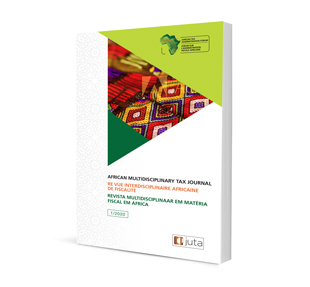
Taxable capacity and effort of value-added tax in Kenya
Authors: Jane Muguchu (janemuguchu@gmail.com), Nelson H.Wawire, Anthony Wambugu
ISSN: 2709-8575
Affiliations: Ph.D. Student, School of Economics, University of Nairobi, Kenya; Associate Professor of Economics, School of Economics, Kenyatta University, Nairobi, Kenya; Professor of Economics, School of Economics, University of Nairobi, Kenya
Source: African Multidisciplinary Tax Journal, 2021 Issue 1, p. 189-210
https://doi.org/10.47348/AMTJ/
Abstract
Domestic tax revenue mobilisation has received great focus among developing countries in order to achieve the development objectives with less reliance on foreign aid. The effort to mobilise revenue in developing countries has been undermined by some challenges such as high levels of non-compliance, low taxable capacity and effort averaging 10 to 20 per cent compared to Organisation for Economic Cooperation and Development (OECD) countries, which collect 30 to 40 per cent of their gross domestic product (GDP). To achieve Kenya’s Vision 2030 development objectives, the tax administration is expected to collect over 20.7 per cent of GDP and ensure revenue growth of 10 per cent per annum (Republic of Kenya, 2007). This called for establishing how far the country is from reaching its maximum tax potential and the effect of various factors that determine the taxable capacity of the country. Emphasis was placed on value-added tax (VAT) due to its high revenueraising potential. Using the Ordinary Least Squares (OLS) estimation technique and maximum likelihood for stochastic frontier approach, the study estimated the taxable capacity and effort of value-added tax (VAT). The results indicated that capital investment, manufacturing and private credit as a per cent of GDP impacted positively on taxable capacity while inflation, exports and agriculture negatively affected taxable capacity. The tax effort estimation results indicated that the average tax effort between 2011 and 2015 was 0.5, thus classifying the country under low collection, high effort category. Therefore, broadening the tax base through increased investments, manufacturing and improving on the efficiency of tax administration is fundamental in enhancing revenue mobilisation.